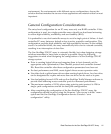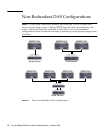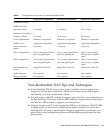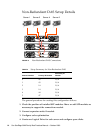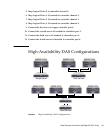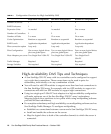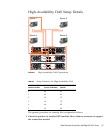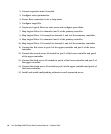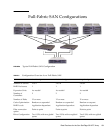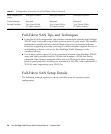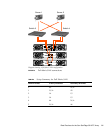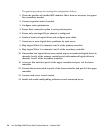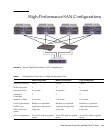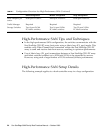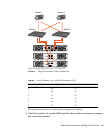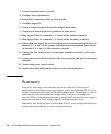
26 Sun StorEdge 3000 Family Best Practices Manual • October 2003
2. Connect expansion units if needed.
3. Configure cache optimization.
4. Ensure fibre connection option set to loop mode.
5. Configure target IDs.
6. Create at least two logical drives and configure spare disks.
7. Create one or more logical drive partitions for each server.
8. Map Logical Drive 0 to channels 0, 1, 4 and 5 of the primary controller
9. Map Logical Drive 1 to channels 0, 1, 4 and 5 of the secondary controller.
10. If more than two logical drives were created, map even-numbered logical drives to
channels 0, 1, 4 and 5 of the primary controller and odd-numbered logical drives
to channels 0, 1, 4 and 5 of the secondary controller.
11. Connect the first switch to port 0 of the upper controller and port 1 of the lower
controller.
12. Connect the second switch to port 4 of the lower controller and port 5 of the upper
controller.
13. Connect each server to each switch.
14. Install and enable multipathing software on each connected server.
Summary
Entry-level, mid-range, and enterprise servers are used for a wide range of
applications with distinct storage requirements, so the Sun StorEdge 3510 FC array
features a modular architecture with flexible configurations. For example, a solution
can be deployed as direct-attached storage (DAS) or as part of a storage area
network (SAN). Configuration preferences include RAID protection levels, single or
redundant controllers, total storage capacity, multipathing and more.
Modularity and flexibility allow Sun StorEdge 3510 FC array storage solutions to be
quickly and easily adapted to a particular environment.



